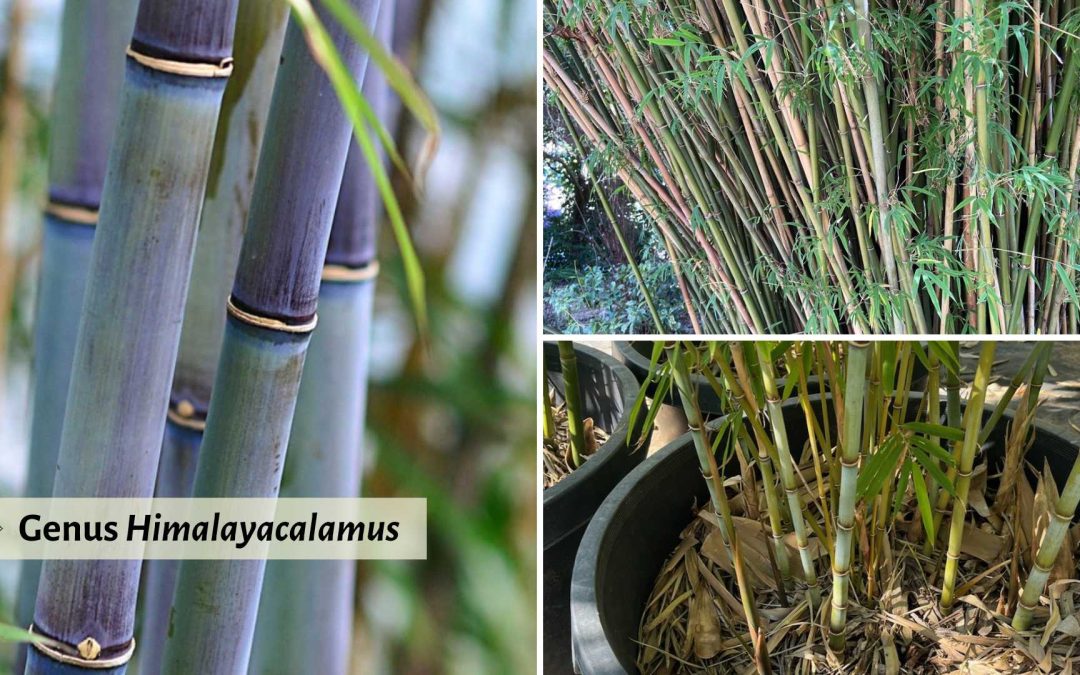When looking for bamboo, your first instinct is probably not to head for the hills. But there is a surprising variety of bamboo native to the mountains of both Africa and Asia. As the name should tell you, the genus Himalayacalamus comes from the same great mountain range that includes K2 and Mount Everest. But that’s not the only thing that sets these bamboos apart.
The genus Himalayacalamus includes about nine species of bamboo native to the lower elevations of the Himalayas. These medium-sized clumping bamboo varieties grow primarily in the mountains of Tibet, Nepal, Bhutan and northern India. Colorful culms, in shades of blue and magenta, make some species of Himalayacalamus especially popular as ornamentals. The genus Drepanostachyum grows in the same part of the world and bears a very close resemblance. Other bamboo genera from this part of the world are Borinda and Yushania.
Bamboo Genera
This article — first published in December 2020 and last updated in September 2024 — is part of an ongoing series about different types and species of bamboo. To learn more about this fascinating and diverse sub-family of grasses, check out these other articles.
- Bamboo Species Directory
- Genus Bambusa: Paragon of bamboo
- Chimonobambusa: Exotic Asian bamboo
- Fargesia: Clumping bamboo for cold climates
- Genus Gaudua: Neotropical bamboo
- Phyllostachys: Temperate bamboo for all climates
- Herbaceous bamboo: Olyreae
Characteristics of genus Himalayacalamus
Himalayacalamus is a small but interesting group of bamboo with some very distinctive features. They are unusual, but not unique, for the fact that they grow in the lower elevations of the world’s greatest mountain range, the Himalayas. Generally, they grow at a couple thousand feet in altitude, all the way up to 6 or 7,000 feet above sea level.
What’s more interesting to gardeners is that these bamboos have a clumping (rather than running) growth habit. Clumping bamboos are much more manageable and don’t run the risk of becoming invasive.
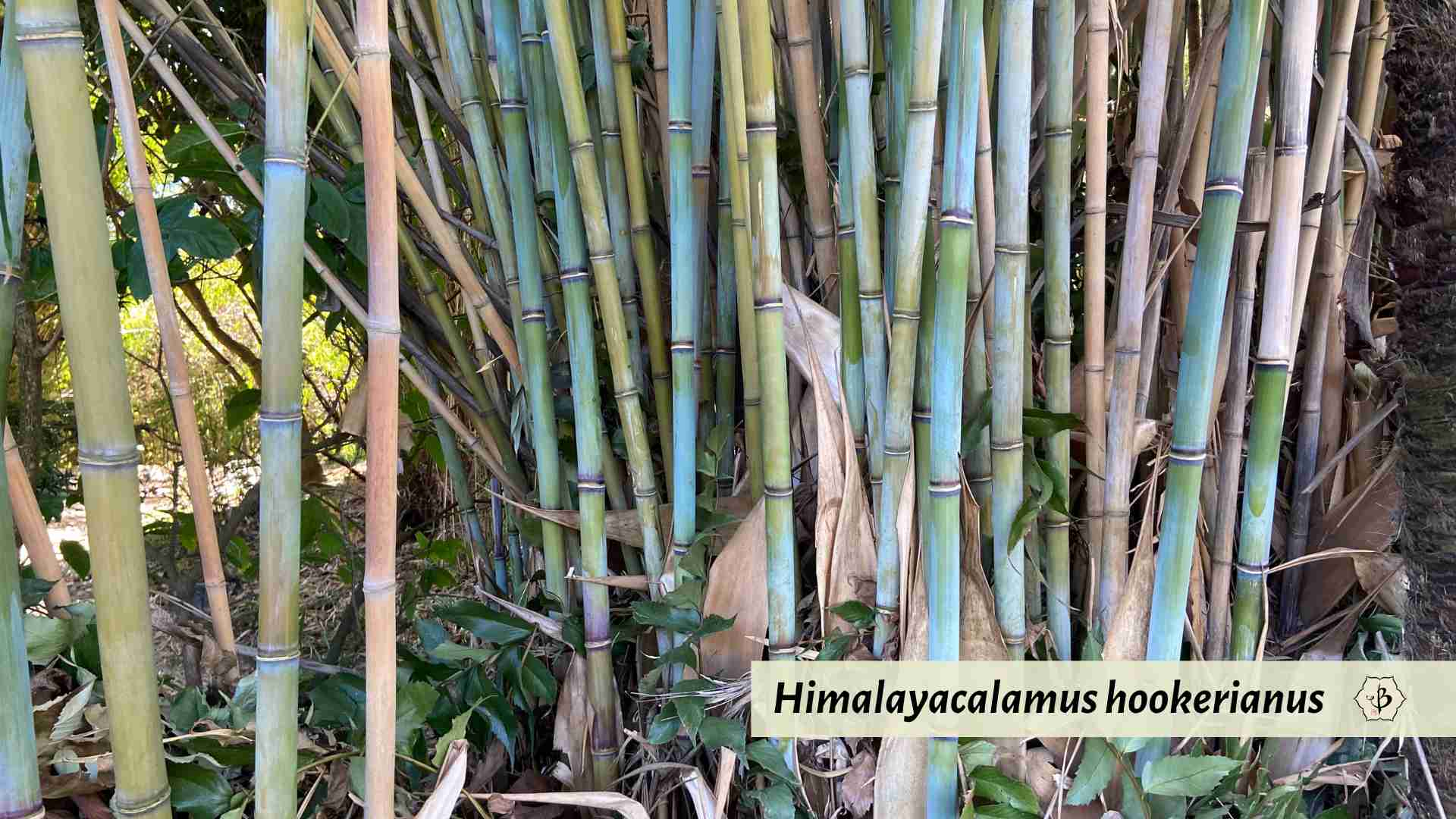
But it’s the color of the Himalayacalamus bamboo species that really makes them stand out. Some varieties have powdery blue culms, sometimes even turning a remarkable shade of turquoise. Other species exhibit beautiful reddish hues, verging on maroon or even purple. The blue color comes from a light powder in the culm sheaths. So you’ll see that young culms have more blue, and the color slowly fades with age.
These particular bamboos are relatively cold-hardy, especially for a clumping bamboo. Generally, they can survive temperatures as low as 15º or 20º F without frost damage. They prefer cooler climates, or at least partial shade, and really won’t grow well in hot, muggy places like Florida and the Deep South.
Classification
Unlike most clumping bamboos, which belong to the tropical bamboo tribe Bambuseae, botanists classify Himalayacalamus as a temperate bamboo genus, in the tribe Arundinarieae. In other words, most clumping bamboos, like Bambusa and Dendrocalamus, come from tropic and subtropic habitats. Temperate bamboos, on the other hand, like Phyllostachys and Chimonobambusa, tend to have more vigorous, running rhizome roots.
Himalayacalamus is one of the usual genera of bamboo that is both cold hardy and clumping. Borinda and Yushania, also native to the lower Himalayas, are other good options as cold-tolerant clumpers. But everyone agrees that the genus Fargesia is the most cold hardy clumper of all. These are great bamboo varieties to be aware of, because gardeners in colder climates often have a hard time finding bamboo that can withstand the snow but won’t spread too aggressively.
Another montane bamboo genus, Drepanostachyum, is the most closely related to Himalayacalamus. The telltale difference between the two is that Himalayacalamus has one dominant branch at each node, while the Drepanostachyum has multiple branches of equal size. The close similarity has caused some confusion in classifying certain species. Himalayacalamus falconeri, for example, is still listed sometimes as Drepanostachyum hookerianum.
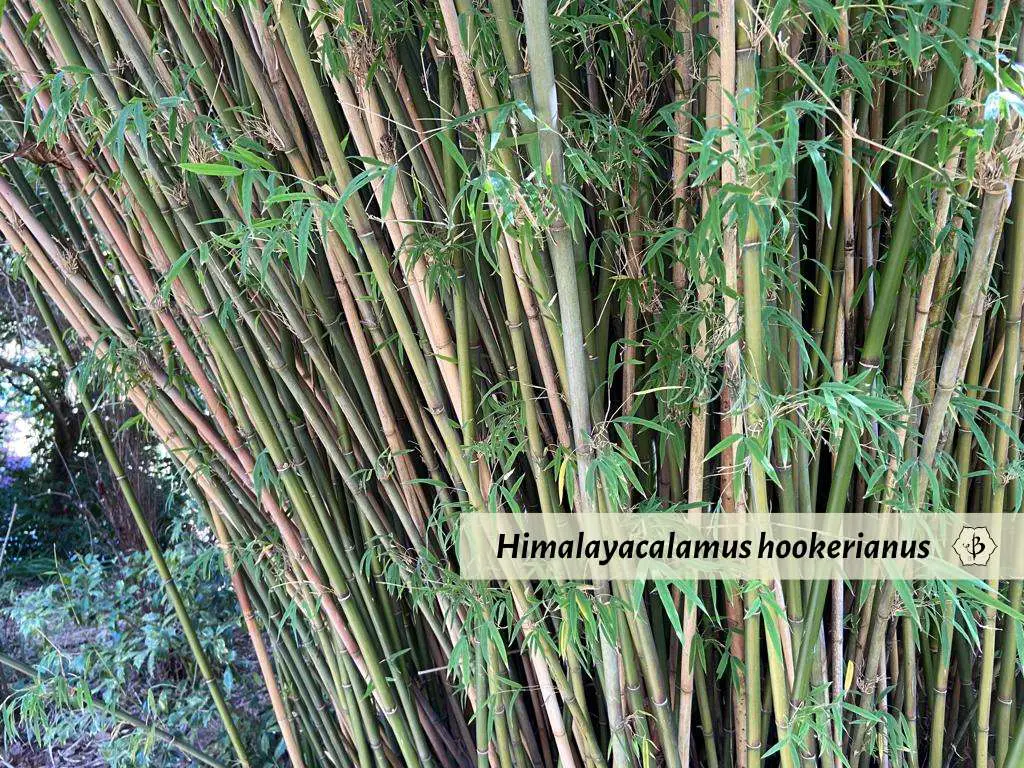
Species of genus Himalayacalamus
There are only about 9 kinds of bamboo in the genus Himalayacalamus, but they include some very popular and interesting ornamental species.
Himalayacalamus asper, also H. planatus
Commonly known as Tibetan Princess or Princess Bamboo, this is an exceptionally attractive variety, just as the name promises. The culms are green with reddish highlights. In the winter they tend to get darker, while keeping light rings around the nodes. These plants grow better with partial shade and filtered sunlight, and are not a good choice in climates with very hot summers A bit more direct sunlight will produce more red in the culms. Mature canes generally get 15 to 20 feet tall. Cold hardy down to about 15º F.
This species is native to Nepal. You might also find it listed as Neomicrocalamus microphyllus.
Himalayacalamus cupreus
This unusual species of Himalayacalamus was found in western Nepal and brought to the UK, where I discovered a modest specimen growing at Kew Botanical Gardens. It’s quite similar to H. falconeri, apart from some subtle differences in the culm sheaths. Culms can grow 8 to 15 feet tall, rarely getting more than an inch in diameter.
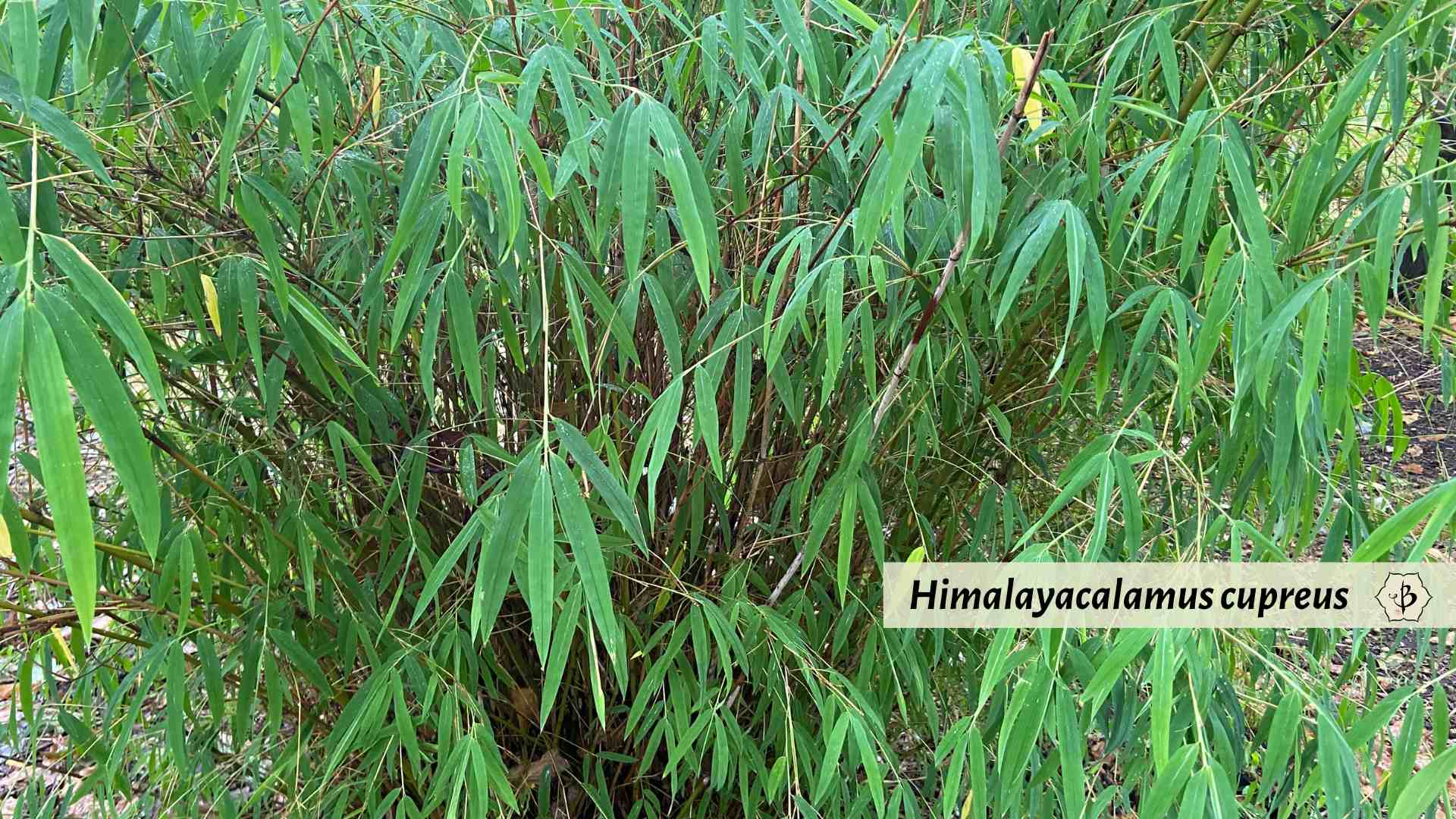
Himalayacalamus falconeri ‘Damarapa’
Popularly known as Candy Stripe or Candy Cane Bamboo, this is another marvelously exotic variety. The culms can vary from bright yellow with green stripes, to a dark pink or berry color. Like H. asper, it prefers mostly shade, but more direct light will bring out more stripes, especially in the summer months. Mature stalks grow 15 to 20 feet tall and about 1.5 inches thick. Hardy down to about 20º F.
The original species, H. falconeri, is more widespread and native to Bhutan, India and Nepal. According to the Bhutan Ministry of Agriculture, this montane bamboo can grow as high as 2,400 meters, or 7,800 feet above sea level. It was formerly called Drepanostachyum hookerianum.
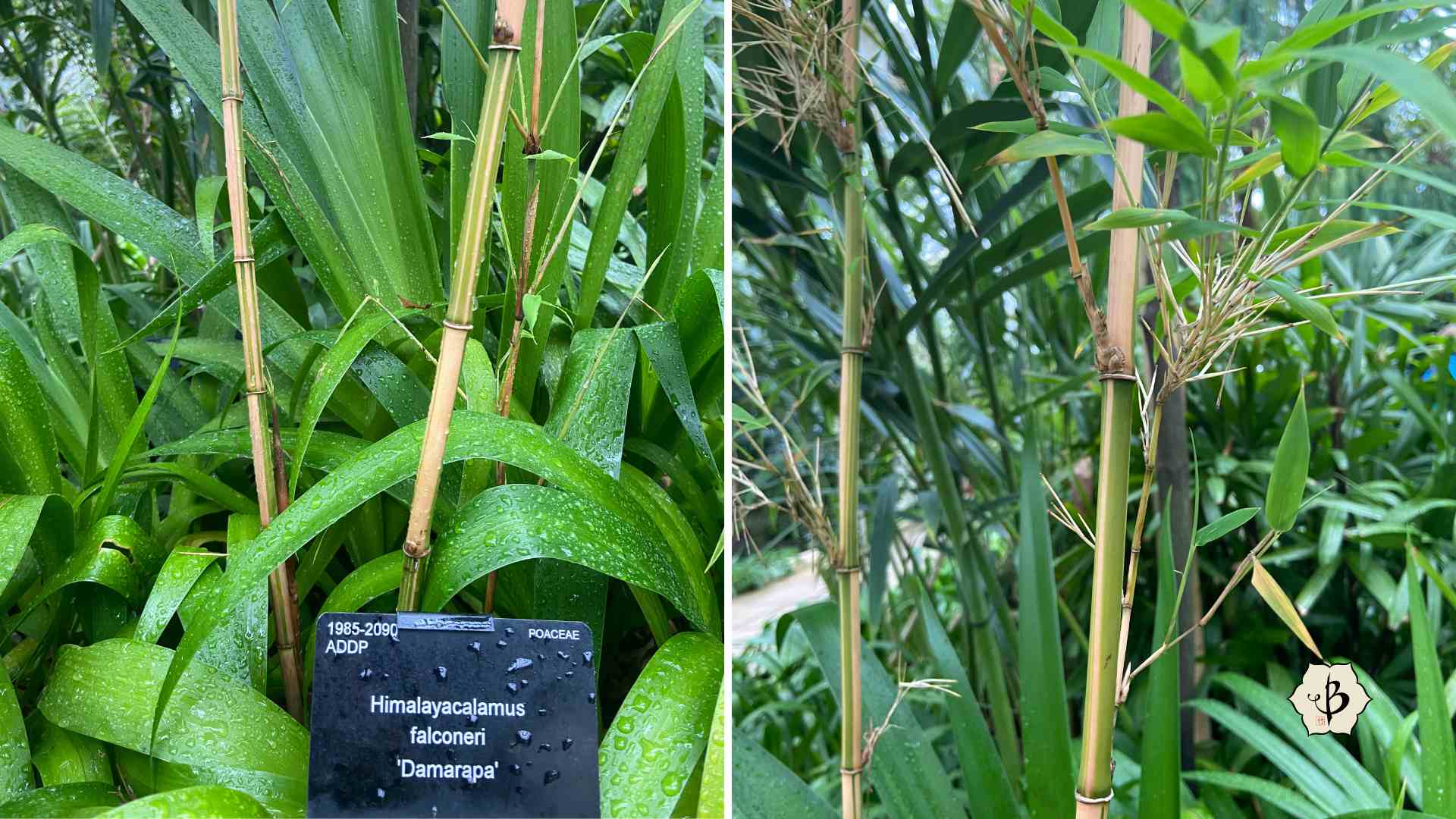
Himalayacalamus hookerianus
Blue Bamboo or Himalayan Blue, should not be confused with the other Blue Bamboo, Bambusa chungii, a giant tropical species. You might also find subspecies listed as ‘Baby Blue’ and ‘Teague’s Blue’. This is one of the most popular and widely available species of this genus. Himalayan Blue has similar size and growing conditions as the other species, but the culms are thinner (3/4 to 1 inch thick) and have a powdery blue color. Sometimes they turn turquoise, highlighted by white rings around the nodes. As they age, the canes turn more golden yellow. Mature clumps are about 10 feet in diameter.
This species originally comes from Bhutan, Nepal and northeastern India. It has also been called Drepanostachyum falcatum.
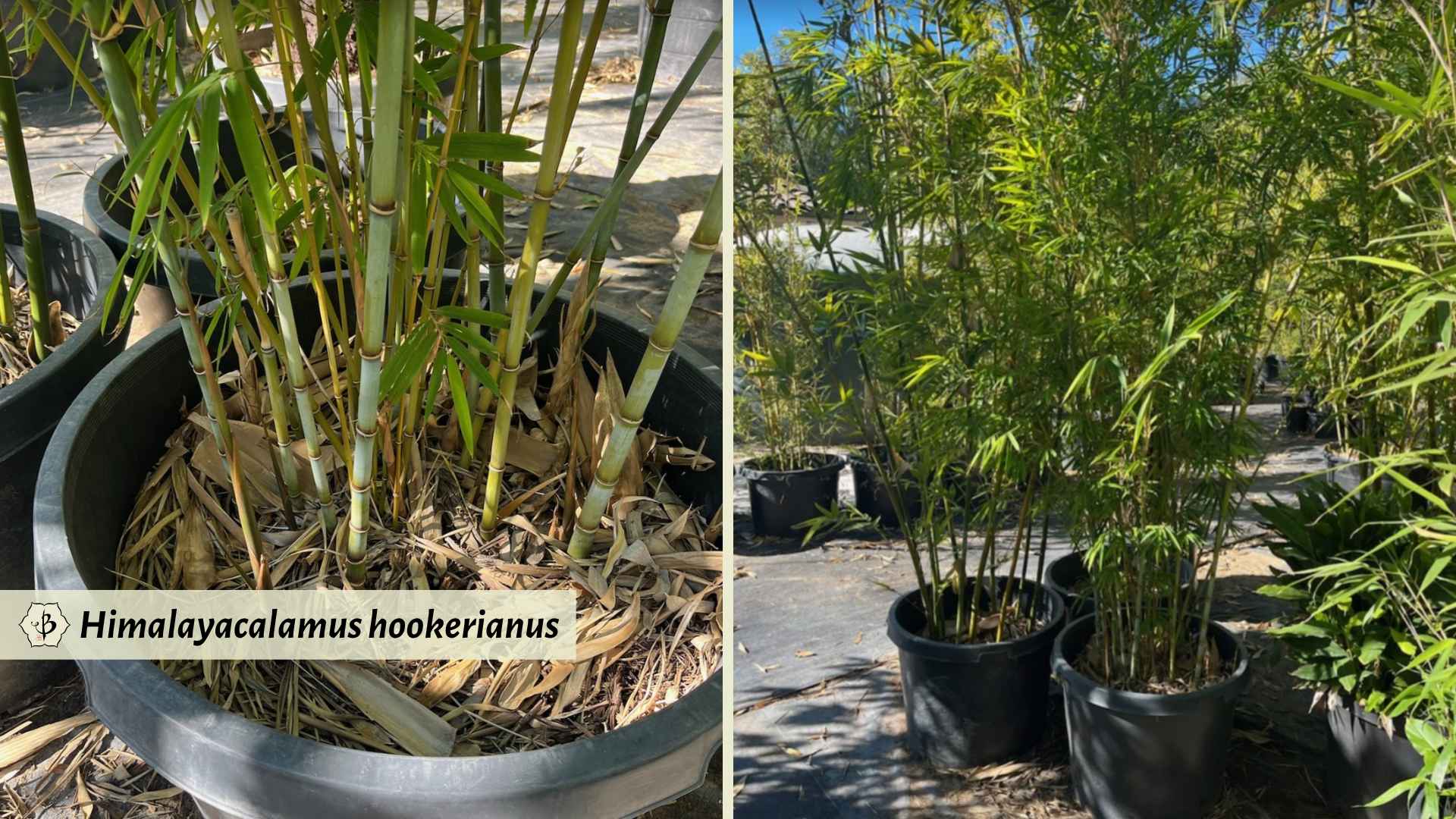
Himalayacalamus porcatus
Nepalese Blue, as it’s popularly known, is quite similar to the Himalayan Blue, but considerably smaller and more compact. Grayish white to light blue culms grow about 6 to 10 feet tall, and 1/2 to 1 inch thick. Mature clumps are about 3 to 4 feet wide. The plant can be pruned to be even smaller and looks great in a pot or container. This species also tends to cascade a bit more than its upright cousins. Like all Himalayacalamus, Nepalese Blue does much better in cooler climates with limited direct sunlight.

Further reading
If you’d like to learn more about the many uses and varieties of bamboo, take a look at some of these related articles.

